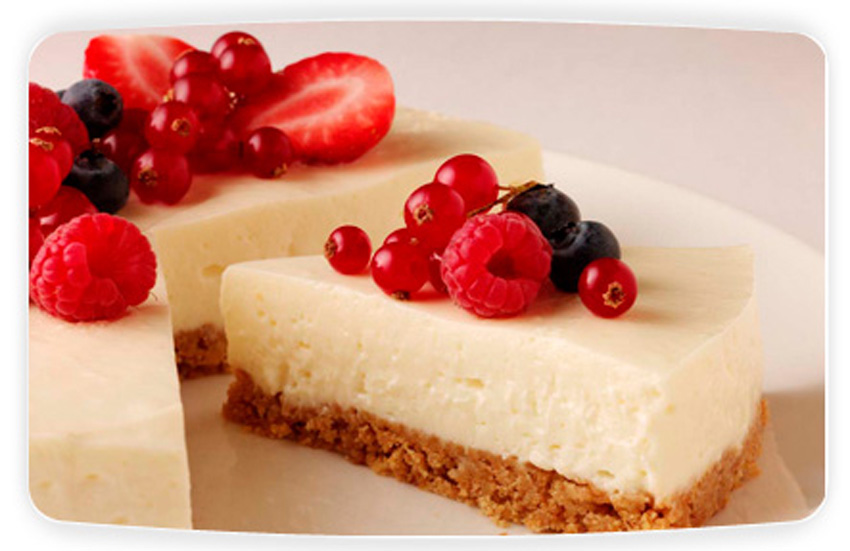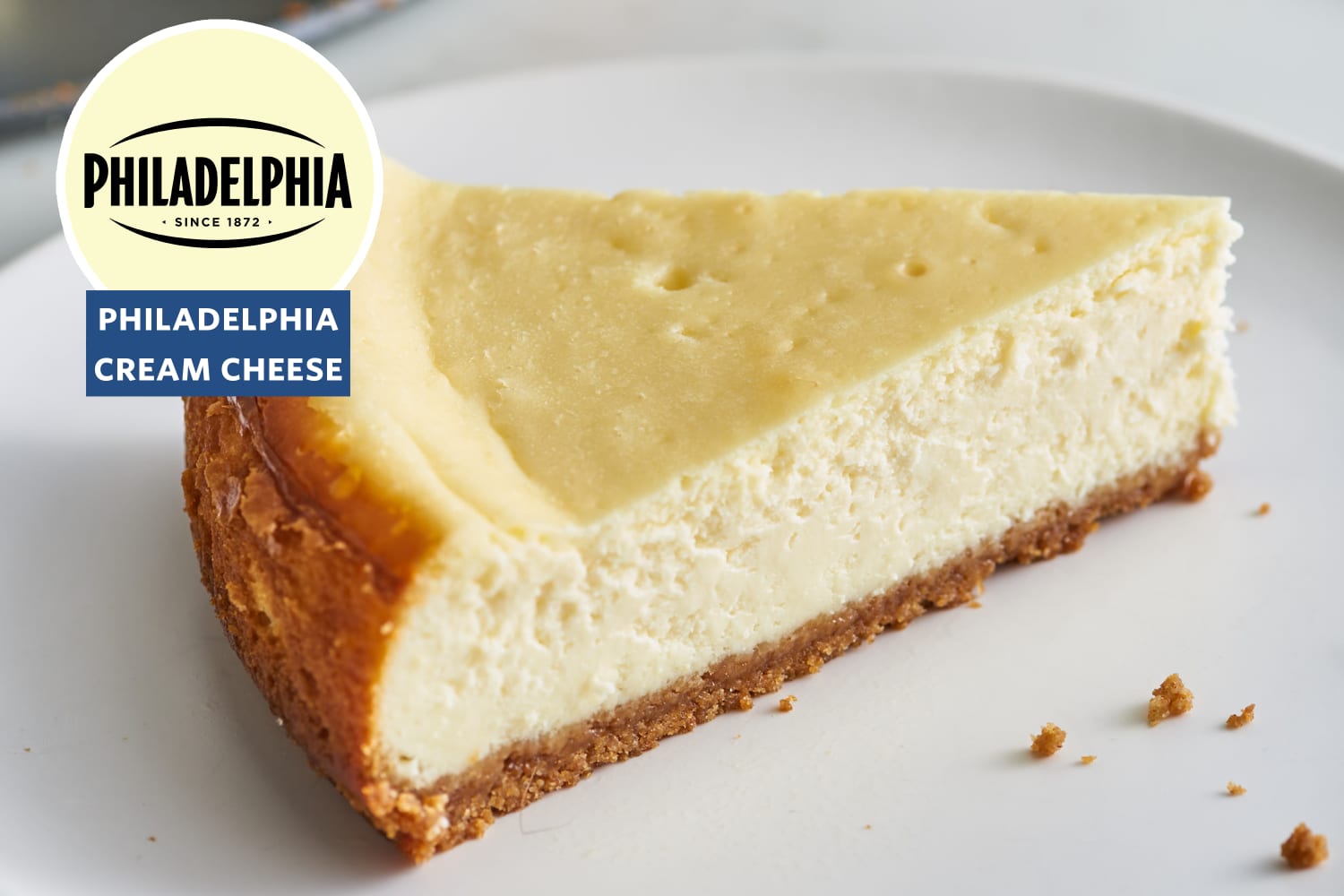Indulge in the delectable world of Philadelphia cream cheesecakes, a culinary masterpiece that tantalizes taste buds and captivates hearts. With its velvety smooth texture, tantalizing flavors, and endless topping possibilities, this iconic dessert has become a beloved classic. Join us on a culinary journey as we delve into the secrets of crafting the perfect Philadelphia cream cheesecake, from selecting the finest ingredients to achieving that irresistible melt-in-your-mouth texture.
Throughout this guide, we’ll provide expert tips, detailed instructions, and a wealth of knowledge to empower you in creating cheesecakes that will impress family, friends, and fellow dessert enthusiasts alike. Whether you’re a seasoned baker or a novice eager to explore the world of cheesecakes, this comprehensive guide will equip you with the skills and confidence to master this culinary art.
Ingredients

The foundation of a delectable Philadelphia cream cheesecake lies in carefully selected ingredients, each playing a pivotal role in creating its signature texture and flavor.
At the heart of this dessert is the eponymous Philadelphia cream cheese, renowned for its velvety smoothness and rich tang. Its high fat content contributes to the cheesecake’s creamy texture, while its acidity provides a balanced flavor profile.
Cream Cheese Comparison
While Philadelphia cream cheese remains the gold standard, other cream cheese varieties offer unique characteristics:
| Type | Fat Content | Texture | Flavor |
|---|---|---|---|
| Regular Cream Cheese | 33% | Creamy, spreadable | Tangy, slightly salty |
| Light Cream Cheese | 25% | Softer, more spreadable | Less tangy, milder |
| Whipped Cream Cheese | 12% | Light, airy | Sweet, creamy |
| Sour Cream | 18% | Tangy, slightly grainy | Tart, acidic |
Choosing Quality Ingredients
The quality of ingredients is paramount for a superior cheesecake. Opt for high-quality Philadelphia cream cheese, free of additives or preservatives. Fresh eggs provide richness and structure, while pure vanilla extract adds a delicate sweetness and aroma. Sugar contributes to both sweetness and texture, and a touch of lemon juice balances the flavors.
Crust
The crust is an essential component of a Philadelphia cream cheesecake, providing a sturdy base and a contrasting texture to the creamy filling. There are several popular types of crusts used in cheesecakes, each with its unique characteristics and preparation methods.
Graham Cracker Crust
Graham cracker crust is a classic choice for cheesecakes. It is made from crushed graham crackers combined with melted butter. The mixture is pressed into a springform pan and baked until firm. This crust is easy to make and provides a crisp and crumbly texture.
Cookie Crust
Cookie crust is another popular option for cheesecakes. It is made from crushed cookies, such as Oreos or chocolate wafers, combined with melted butter. The mixture is pressed into a springform pan and baked until firm. Cookie crusts offer a variety of flavors and textures, depending on the type of cookies used.
Pastry Crust
Pastry crust is a more elaborate option for cheesecakes. It is made from a mixture of flour, butter, and water. The dough is rolled out and placed in a springform pan. The crust is then baked until golden brown. Pastry crusts provide a flaky and buttery texture.The
choice of crust depends on personal preference and the desired flavor and texture. A well-made crust will enhance the overall cheesecake experience, providing a solid foundation and a complementary flavor profile to the creamy filling.
3. Filling
Creating a velvety smooth and luscious cheesecake filling is an art form that requires precision and attention to detail. This section will guide you through the meticulous steps involved in crafting the perfect cheesecake filling, ensuring a delectable treat that melts in your mouth.
To begin, cream together the softened cream cheese and sugar until light and fluffy. This step is crucial in incorporating air into the filling, resulting in a lighter texture. Avoid overbeating, as this can cause the filling to become dense and grainy.
Mixing the Ingredients
- Incorporate the eggs one at a time, mixing well after each addition. This gradual incorporation prevents the eggs from curdling and ensures an even distribution of flavors.
- Add the vanilla extract, lemon juice, and sour cream. These ingredients enhance the richness and tanginess of the cheesecake.
- Mix in the flour, if using, to help bind the filling and prevent it from cracking during baking.
Achieving the Desired Consistency
The consistency of the cheesecake filling is paramount. To achieve the ideal texture, use a rubber spatula to gently fold in the whipped cream. This step adds volume and lightness to the filling without overbeating.
Preventing Lumps
To prevent lumps from forming, ensure that all ingredients are at room temperature before mixing. This allows them to combine smoothly and evenly. Additionally, strain the filling through a fine-mesh sieve to remove any potential lumps.
Ensuring Even Distribution of Flavors
To ensure an even distribution of flavors throughout the cheesecake, mix the filling thoroughly before pouring it into the prepared crust. Use a spatula to scrape the sides of the bowl to incorporate all the ingredients.
4. Baking
Achieving the perfect balance of texture and flavor in a Philadelphia cream cheesecake requires precise baking techniques.
Optimal Baking Temperature and Time
Preheat your oven to 350°F (175°C) for a consistent bake. The cheesecake should bake for 50-60 minutes, or until the center is just set. Insert a toothpick into the center; it should come out clean or with just a few moist crumbs attached.
Water Baths
Water baths are essential for creating a moist and evenly cooked cheesecake. Place the cheesecake pan inside a larger roasting pan and fill the roasting pan with hot water to come halfway up the sides of the cheesecake pan. The water bath helps to regulate the temperature and prevent the cheesecake from overbaking or cracking.
Tips for Avoiding Overbaking or Underbaking
- Use a thermometer to ensure the oven temperature is accurate.
- Bake the cheesecake until the center is just set, not completely firm.
- Let the cheesecake cool completely in the oven with the door slightly ajar to prevent the top from cracking.
5. Cooling
Cooling a Philadelphia cream cheesecake properly is crucial for its texture and flavor. Gradual cooling prevents the cheesecake from cracking and ensures an even distribution of moisture.
Once baked, allow the cheesecake to cool in the oven with the door slightly ajar for about an hour. This gradual cooling process helps the cheesecake adjust to the temperature change without causing it to crack.
Refrigeration
Once the cheesecake has cooled slightly, refrigerate it for at least 4 hours or overnight. Refrigeration firms up the cheesecake and allows the flavors to meld. Cover the cheesecake loosely with plastic wrap to prevent it from absorbing odors from the refrigerator.
Freezing
Cheesecakes can also be frozen for up to 2 months. Wrap the cheesecake tightly in plastic wrap and then in aluminum foil. Thaw the cheesecake in the refrigerator overnight before serving.
Slicing and Serving
For the best texture and flavor, slice the cheesecake when it is well-chilled. Use a sharp knife and wipe it clean after each cut to prevent the cheesecake from sticking to the blade. Serve the cheesecake at room temperature or slightly chilled.
6. Toppings
Toppings can elevate the flavor and presentation of a Philadelphia cream cheesecake. They add an extra layer of texture, sweetness, or acidity that complements the rich and creamy filling.
Fruit Sauces
Fruit sauces are a classic topping for cheesecakes. They provide a burst of sweetness and freshness that balances the richness of the cheesecake. Popular fruit sauces include strawberry, blueberry, raspberry, and cherry. To make a fruit sauce, simply combine your chosen fruit with sugar and lemon juice, and simmer until thickened.
Chocolate Ganache
Chocolate ganache is a rich and decadent topping that adds a touch of sophistication to any cheesecake. It is made by combining melted chocolate with heavy cream. The ganache can be poured over the cheesecake while it is still warm, or it can be chilled and whipped to create a lighter and fluffier topping.
Whipped Cream
Whipped cream is a versatile topping that can be used to add a touch of elegance or whimsy to a cheesecake. It is made by whipping heavy cream until it forms stiff peaks. Whipped cream can be flavored with vanilla, sugar, or other flavorings to create a variety of different tastes.
Final Thoughts
As you embark on your cheesecake-making adventures, remember that the joy lies not only in the final product but also in the process itself. Experiment with different flavors, toppings, and crusts to create unique and personalized cheesecakes that reflect your creativity and passion for baking.
With each cheesecake you craft, you’ll not only satisfy your sweet cravings but also create cherished memories that will last a lifetime. So, let’s don our aprons, gather our ingredients, and embark on this delectable journey together!
Frequently Asked Questions
Can I use regular cream cheese instead of Philadelphia cream cheese?
While regular cream cheese can be used as a substitute, Philadelphia cream cheese is highly recommended for its superior quality, smooth texture, and consistent results.
What is the best way to achieve a graham cracker crust that is both crunchy and flavorful?
To achieve the perfect graham cracker crust, combine graham cracker crumbs with melted butter, sugar, and a pinch of salt. Press the mixture firmly into a springform pan and bake it until golden brown.
How can I prevent my cheesecake from cracking during baking?
To prevent cracking, bake the cheesecake in a water bath. This creates a humid environment that helps to evenly distribute heat and prevent the top of the cheesecake from overcooking.
What is the ideal temperature for serving a Philadelphia cream cheesecake?
For the best flavor and texture, serve the cheesecake chilled but not icy cold. Let it sit at room temperature for about 30 minutes before serving to allow the flavors to fully develop.
Can I freeze a Philadelphia cream cheesecake?
Yes, you can freeze a Philadelphia cream cheesecake for up to 2 months. Wrap it tightly in plastic wrap and then aluminum foil before placing it in the freezer.

